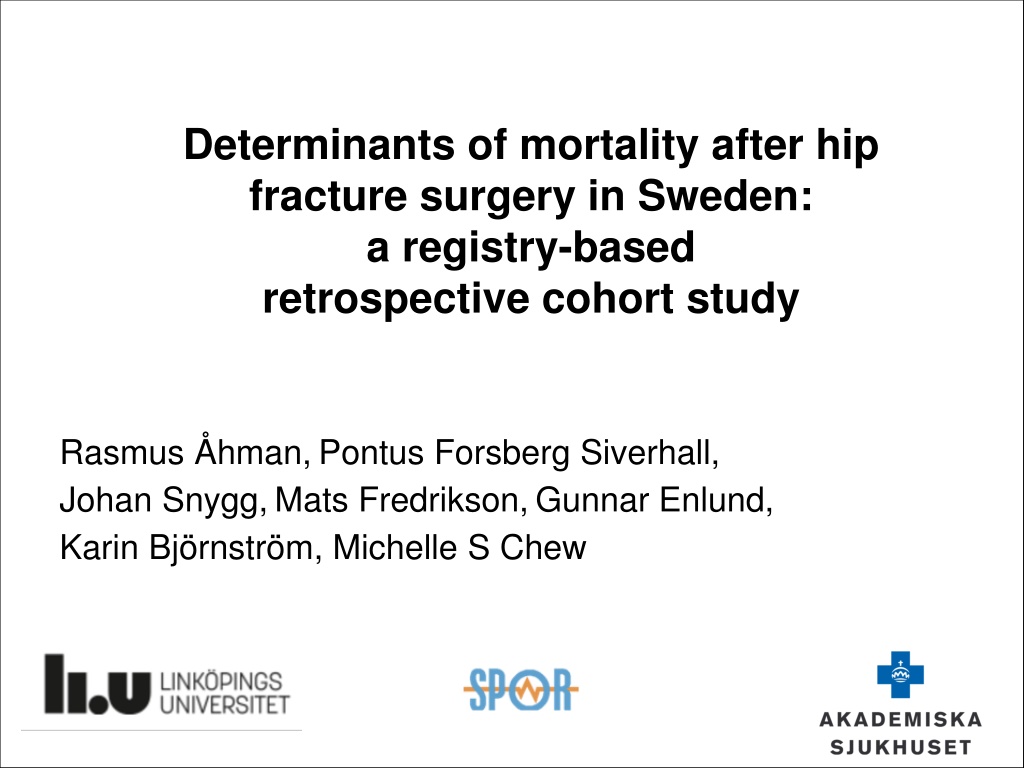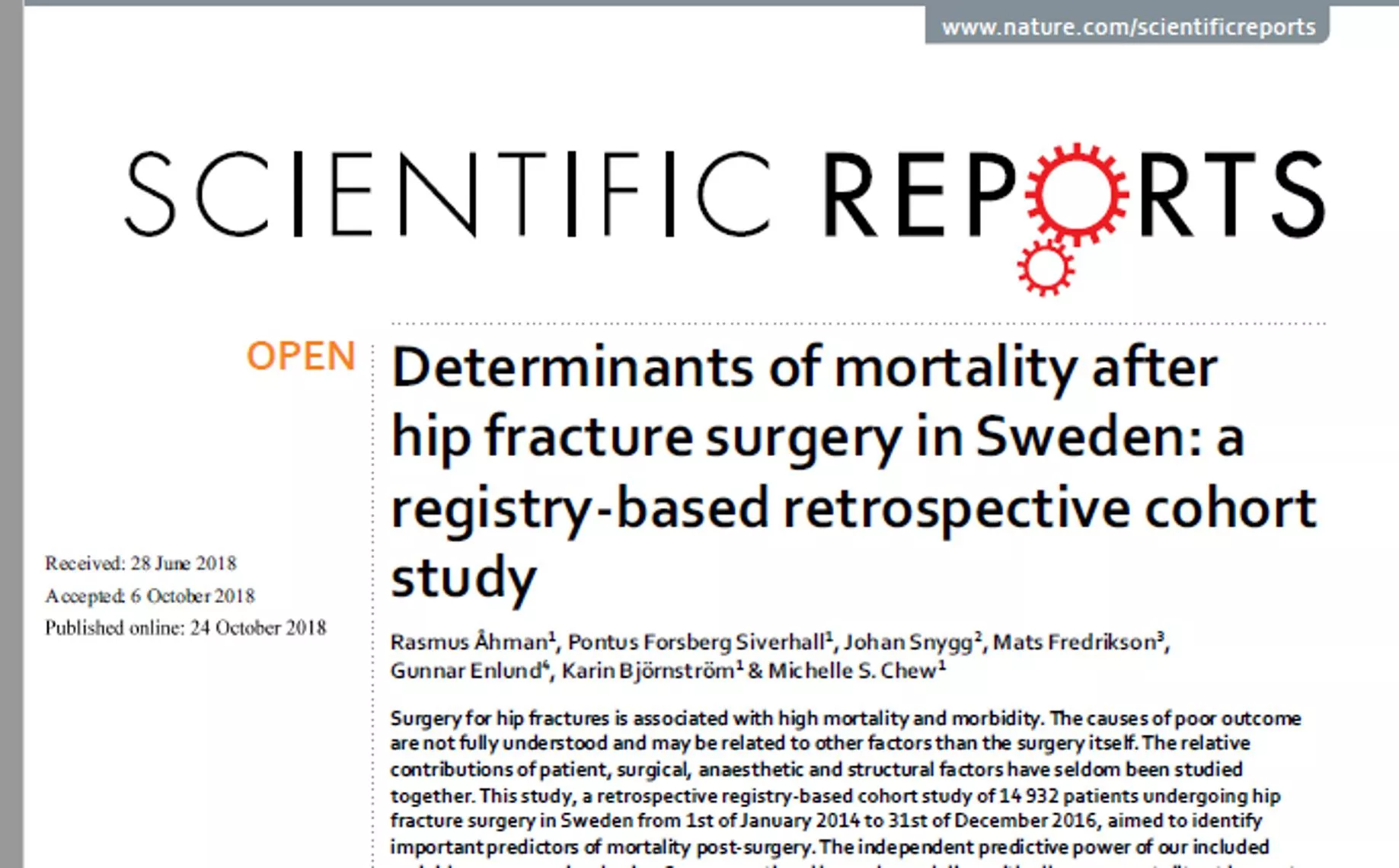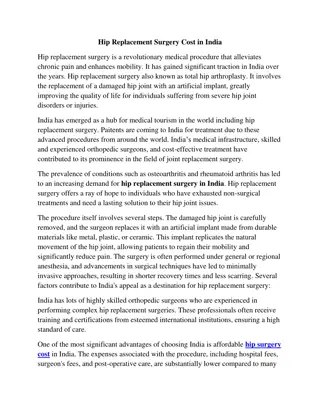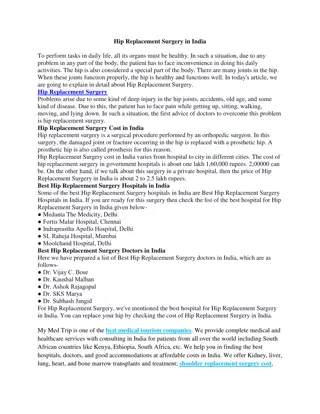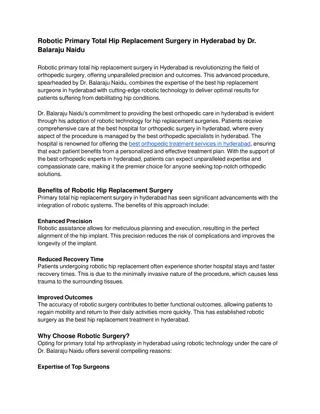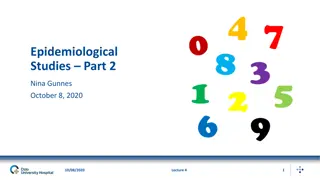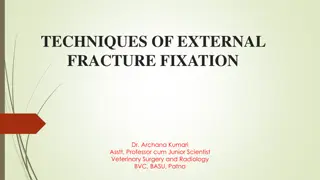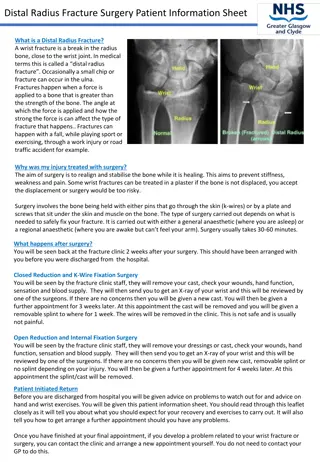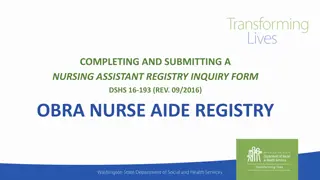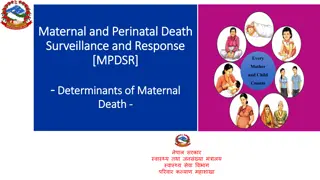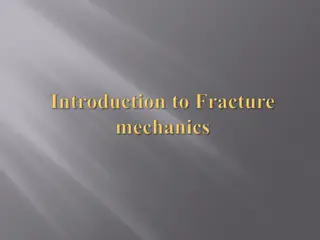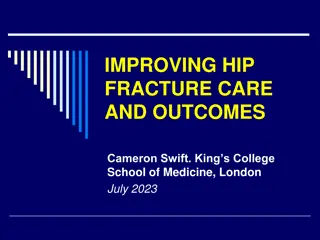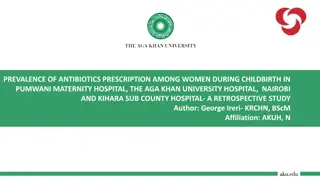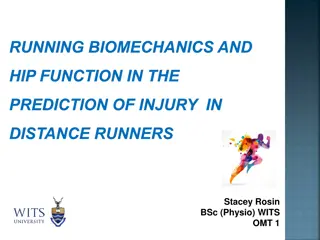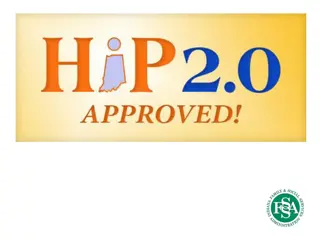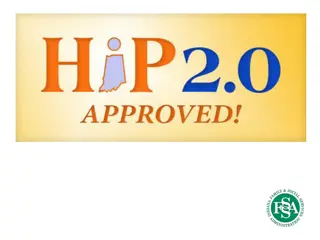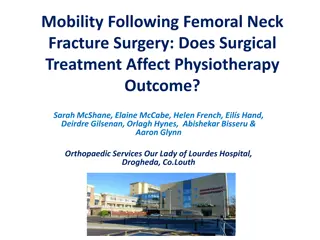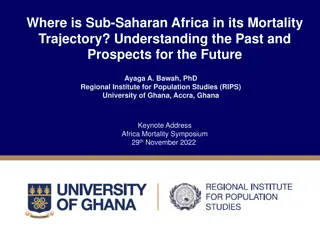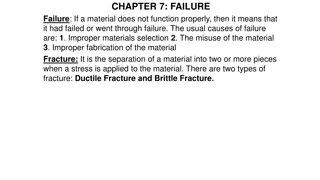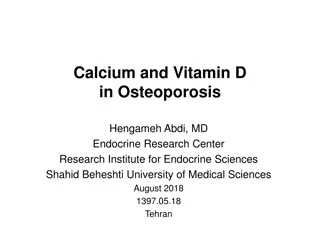Determinants of Mortality After Hip Fracture Surgery in Sweden: A Registry-Based Retrospective Cohort Study
Hip fractures in Sweden pose significant challenges due to increased mortality rates. A retrospective cohort study analyzed data from the Swedish PeriOperative Registry to identify factors influencing patient outcomes post-surgery, highlighting the importance of various perioperative variables on long-term mortality.
Download Presentation

Please find below an Image/Link to download the presentation.
The content on the website is provided AS IS for your information and personal use only. It may not be sold, licensed, or shared on other websites without obtaining consent from the author. Download presentation by click this link. If you encounter any issues during the download, it is possible that the publisher has removed the file from their server.
E N D
Presentation Transcript
Determinants of mortality after hip fracture surgery in Sweden: a registry-based retrospective cohort study Rasmus hman,Pontus Forsberg Siverhall, Johan Snygg,Mats Fredrikson,Gunnar Enlund, Karin Bj rnstr m, Michelle S Chew
Introduction 1 Hip fractures are associated with increased mortality, morbidity and financial burden for patients and health care providers.1 Sweden has one of the highest age- adjusted incidence of hip fractures in the world2-4. 16.000 in the year 2017. The number is predicted to double between 2002 and 2050.5
Introduction 2 Outcome after hip fracture surgery is likely to be multifactorial. Few studies have evaluated the entire perioperative course including patient, surgical, anaesthetic and structural factors. In addition, longer-term outcomes are less frequently reported.
Study design 1 This is a registry-based retrospective cohort study using prospectively collected data in the Swedish PeriOperative Registry (SPOR). Patients 18 years of age with a Swedish social security number undergoing surgical hip fracture procedures between 1stof January 2014 and 31stof December 2016 were included
Study design 2 The exposures were a series of patient, surgery, anaesthesia and structural factors in patients subjected to acute hip fracture surgery. All cause-mortality at longest follow-up was our primary outcome. Mortality data was extracted from the SPOR and cross-checked with the Swedish Registry of Deaths.
We investigated 12 independent variables that were a priori defined. compliance to surgical urgency planning, surgical delay, time in theatre, type of anaesthesia, PACU-LOS and ICU-admission age, gender, ASA-PS-class, university hospital status, time of surgery, type of surgery
Data Collection 1 SPOR was queried for all surgical procedures with procedural codes using the Swedish version of the NOMESCO Classification of Surgical Procedures.33 KV -codes in Swedish
Data Collection 2 Inclusions NFJ.XX (surgery for hip fractures) or NFB.XX (hip prosthetic surgery) in combination with a primary diagnosis of hip fractures (diagnosis codes S72.XX).
Data Collection 3 Exclusions Patients who only had surgical resetting codes (NFJ09 and NFJ19) without secondary surgical procedural codes Patients undergoing elective surgery, Patients without mortality data.
Figure 1: Flowchart demonstrating the inclusion process.
Data collection and cleaning 1 SPOR is a prospectively maintained registry with a number of built-in data validation processes. For example, the data are subject to a number of automatic logical controls. Incorrect and/or inconsistent posts are returned to the user for correction prior to inclusion in the database.
Data collection and cleaning 2 Variables were checked for completeness and consistency. Data regarding ASA-PS-class was missing for 799 patients, PACU-LOS for 1310 patients and anesthetic technique for 231 patients. We could not identify data that were obviously missing in a systematic fashion, therefore all 14932 patients were included for analysis and missing data were imputed.
ldersgrupper / Age groups 90 85-89 80-84 70-79 55-69 18-54 0 500 1000 1500 2000 2500 3000 3500 4000
Cox analys , Univariable analysis, associated with 30 day mortality.
ASA-class mean 2,60 ASA 5 ASA 4 ASA 3 ASA 2 ASA 1 0 1000 2000 3000 4000 5000 6000 7000 8000
Cox analys , Univariable analysis, associated with 30 day mortality.
Type of surgical procedure Hip replacement: non-cemented Hip replacement: cemented Osteosynthesis: screw and plate Osteosynthesis: intramedullary nail Osteosynthesis: cerclage, spikes, pins 0 1000 2000 3000 4000 5000 6000
Surgical planning waiting time >24h <24h <6h <2h <0.5h (emergency) 0 2000 4000 6000 8000 10000 12000 14000
Surgery - Time of day no extra risk
Anaesthetic technique no difference in mortality30 days General 2613 (17.8) Loco regional 12088 (82.2)
Other results: 30-day mortality 365-day mortality = 8,2% = 23,6 %
Sensitivitetstest 1 To test for generalizability of results, sensitivity analyses were performed for each calendar year. Our sample size for 2014, 2015 and 2016 were 3202 patients (21.5%), 5188 patients (34.7%) and 6542 patients (43.8%) respectively. The differences may be explained by the fact that SPOR is a newly developed registry and coverage increased over the 3 years.
Conclusion 1 Age, gender, ASA-PS-class were strong predictors of mortality after surgery for hip fractures in Sweden. University hospital status and length of stay in the postoperative care unit were also identified as important modifiable risk factors that persisted after adjustment for confounders.
Conclusion 2 Whilst we are unable to attribute causality to these findings, they deserve attention in future studies Study to help understand how university hospital status and postoperative care may contribute to survival.
Take a walk with SPOR! SPOR home page: www.spor.se
Authors +,*Rasmus hman1 +Johan Snygg2 Gunnar Enlund4 Michelle S Chew1 +Pontus Forsberg Siverhall1 Mats Fredrikson3 Karin Bj rnstr m1 +Rasmus hman, Pontus Forsberg Siverhall and Johan Snygg contributed equally to this work *Rasmus hman is corresponding author for this paper, rasah694@student.liu.se **Michelle S Chew and Karin Bj rnstr m are co-senior authors 1Department of Anaesthesia and Intensive Care, Department of Medical and Health Sciences, Link ping University, Link ping, S-581 85 Sweden 2Department of Anaesthesia and Intensive Care, Sahlgrenska University Hospital, 413 45 Gothenburg, Sweden 3Department of Clinical and Experimental Medicine, Faculty of Medicine and Health, Link ping University, S-581 85 Link ping, Sweden 4Department of Anaesthesia and Intensive Care, Uppsala University Hospital, 781 85 Uppsala, Sweden
+,*Rasmus hman1 +Pontus Forsberg Siverhall1 +Johan Snygg2 Mats Fredrikson3 Gunnar Enlund4 Karin Bj rnstr m1 Michelle S Chew1 +Rasmus hman, Pontus Forsberg Siverhall and Johan Snygg contributed equally to this work *Rasmus hman is corresponding author for this paper, rasah694@student.liu.se **Michelle S Chew and Karin Bj rnstr m are co-senior authors 1Department of Anaesthesia and Intensive Care, Department of Medical and Health Sciences, Link ping University, Link ping, S-581 85 Sweden 2Department of Anaesthesia and Intensive Care, Sahlgrenska University Hospital, 413 45 Gothenburg, Sweden 3Department of Clinical and Experimental Medicine, Faculty of Medicine and Health, Link ping University, S-581 85 Link ping, Sweden 4Department of Anaesthesia and Intensive Care, Uppsala University Hospital, 781 85 Uppsala, Sweden
